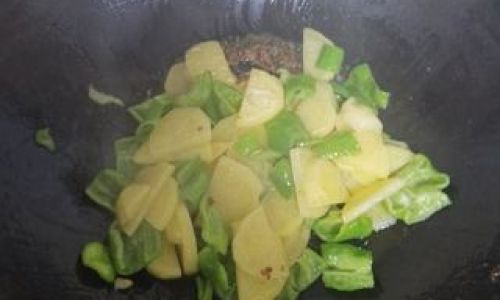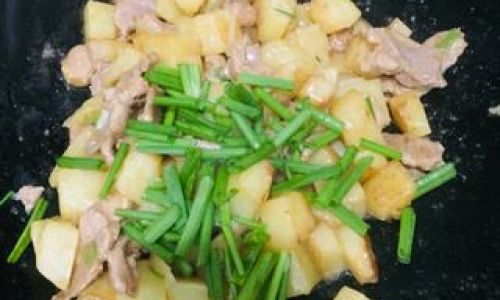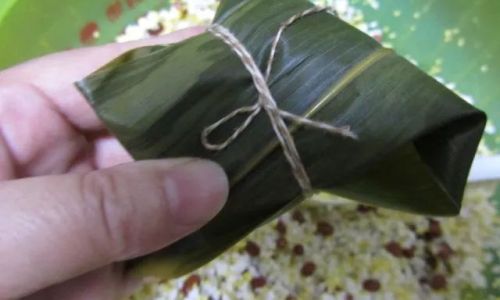Table of content
Yam beans, also known as jicama or sengkuang in some Asian cuisines, are a crunchy, slightly sweet root vegetable that adds a refreshing texture to stir-fries. This dish, commonly called “炒山药蛋” in Chinese, combines the natural crispness of yam beans with aromatic seasonings to create a light yet satisfying meal. Whether you’re a seasoned home cook or a beginner in the kitchen, this guide will walk you through selecting ingredients, mastering cooking techniques, and presenting a dish that balances flavor and nutrition.
What Are Yam Beans?
Yam beans are tuberous roots native to Mexico but widely used in Southeast Asian, Chinese, and Caribbean cuisines. Their skin is thick and brown, while the flesh is juicy and white, resembling a cross between a potato and an apple. Low in calories and rich in fiber, vitamin C, and antioxidants, yam beans are a healthy addition to any diet. When stir-fried, they retain their crunch while absorbing the flavors of garlic, ginger, and soy sauce, making them a versatile ingredient for quick weeknight dinners.
Ingredients You’ll Need
To serve 4 people, gather the following:

- 500 grams fresh yam beans (choose firm, unbruised tubers with smooth skin)
- 2 tablespoons vegetable oil (peanut or canola oil works best for high-heat cooking)
- 3 garlic cloves, minced
- 1-inch piece fresh ginger, grated
- 1 small carrot, julienned (for color and sweetness)
- 1 red bell pepper, thinly sliced (optional, for added crunch)
- 2 tablespoons light soy sauce (use tamari for gluten-free)
- 1 teaspoon rice vinegar (or substitute with apple cider vinegar)
- 1/2 teaspoon sugar (to balance flavors)
- 1/4 teaspoon white pepper (or black pepper)
- 1 tablespoon cornstarch (mixed with 2 tablespoons water for thickening)
- Salt to taste
- Fresh cilantro or green onions (for garnish)
Step-by-Step Cooking Instructions
Preparing the Yam Beans
- Peeling: Use a sharp knife or vegetable peeler to remove the tough brown skin. Yam bean skin is fibrous and inedible, so ensure all traces are removed.
- Cutting: Slice the yam bean into thin matchsticks (julienne) or ½-inch cubes. Uniformity ensures even cooking. Soak the pieces in cold water for 10 minutes to prevent browning and remove excess starch, then drain and pat dry.
Prepping Aromatics and Vegetables
- Mince garlic and grate ginger finely. These form the flavor base.
- Julienne the carrot and slice the bell pepper into thin strips. Set aside.
Stir-Frying Technique
Stir-frying requires high heat and quick movements to preserve texture. Follow these steps:
- Heat the Wok: Place a wok or large skillet over high heat. Add 2 tablespoons of oil and swirl to coat the pan.
- Sauté Aromatics: When the oil shimmers, add garlic and ginger. Stir constantly for 30 seconds until fragrant but not browned.
- Add Vegetables: Toss in the carrot and bell pepper. Stir-fry for 2 minutes until slightly softened.
- Introduce Yam Beans: Drain the yam beans and add them to the wok. Stir-fry for 3–4 minutes, maintaining high heat to achieve a slight char without overcooking.
Seasoning and Finishing
- Flavor Base: Pour in soy sauce, rice vinegar, sugar, and white pepper. Toss to coat evenly.
- Thicken Sauce: Stir the cornstarch slurry and pour it into the wok. Continue stirring for 1–2 minutes until the sauce thickens and clings to the vegetables.
- Adjust Seasoning: Taste and add salt if needed. Remove from heat immediately to prevent sogginess.
Garnish and Serve
Transfer the stir-fry to a serving platter. Garnish with chopped cilantro or green onions. Serve hot with steamed rice, noodles, or as a standalone side dish.

Pro Tips for Perfect Stir-Fried Yam Beans
- High Heat is Key: A smoking-hot wok ensures vegetables cook quickly, retaining their crunch. Avoid overcrowding the pan, which lowers the temperature and steams the ingredients.
- Prep Ahead: Chop all vegetables before heating the oil. Stir-frying happens fast, so organization prevents burning.
- Balance Flavors: The soy sauce adds saltiness, while sugar and vinegar provide a tangy-sweet finish. Adjust ratios to suit your taste.
- Avoid Overcooking: Yam beans should remain crisp. Overcooking turns them mushy—test with a fork; they should offer slight resistance.
- Substitutions: Swap vegetables based on availability (e.g., snap peas, mushrooms, or zucchini). For protein, add tofu, shrimp, or chicken during the aromatics step.
Variations to Explore
- Spicy Kick: Add 1–2 dried red chilies or a teaspoon of chili paste with the garlic.
- Nutty Crunch: Toss in a handful of toasted cashews or peanuts before serving.
- Vegan Twist: Use coconut aminos instead of soy sauce for a soy-free option.
- Umami Boost: Sprinkle with toasted sesame seeds or a drizzle of sesame oil before serving.
Nutritional Benefits
This dish is a nutritional powerhouse:
- Low in Calories: A 100g serving contains just 35 calories, making it ideal for weight management.
- Fiber-Rich: Supports digestion and promotes satiety.
- Vitamin C: Boosts immunity and skin health.
- Antioxidants: Combats inflammation and oxidative stress.
Pairing Suggestions
- Main Dishes: Serve alongside garlic noodles, fried rice, or grilled teriyaki salmon.
- Beverages: Pair with jasmine tea, light beer, or a crisp sauvignon blanc.
- Sides: Complement with pickled cucumbers or steamed dumplings for a balanced meal.
Common Mistakes to Avoid
- Using Dull Knives: Blunt blades bruise yam beans, releasing excess moisture and causing sogginess.
- Skipping the Soak: Soaking removes starch, preventing clumping during stir-frying.
- Under-Seasoning: Yam beans are mild, so generous seasoning elevates their flavor.
- Overcrowding the Pan: Cook in batches if needed to maintain high heat.
Storing Leftovers
- Refrigerator: Store in an airtight container for up to 3 days. Reheat in a skillet over medium heat to retain crispness.
- Freezer: Not recommended, as freezing alters texture.
Cultural Context
In Chinese cuisine, stir-fried yam beans are a staple of home-style cooking, often served during family meals or festivals. The dish symbolizes simplicity and harmony, blending earthy vegetables with aromatic spices. Its lightness makes it a favorite in summer, while its versatility ensures year-round appeal.

Conclusion
Mastering stir-fried yam beans is a rewarding culinary achievement. By focusing on fresh ingredients, precise knife work, and high-heat techniques, you’ll create a dish that’s both visually stunning and bursting with flavor. Whether you’re catering to dietary restrictions or seeking a quick, healthy meal, this recipe adapts effortlessly to your needs. So grab your wok, sharpen your knife, and embark on a journey to elevate your stir-fry game—one crispy yam bean at a time.






0 comments